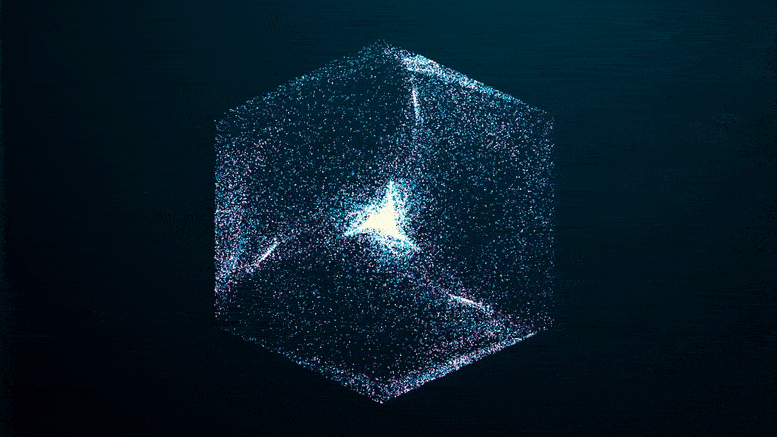
Researchers have produced photonic time crystals in the near-visible spectrum, potentially revolutionizing light science applications. This breakthrough expands the previously understood range of PTCs, which were only seen in radio waves.
A recent study reveals oscillations in the refractive index that are faster than can be explained by current theories.
A study recently published in the journal Nanophotonics reveals that by rapidly modulating the refractive index – which is the ratio of the speed of electromagnetic radiation in a medium compared to its speed in a vacuum – it’s possible to produce photonic time crystals (PTCs) in the near-visible part of the spectrum.
The study’s authors suggest that the ability to sustain PTCs in the optical domain could have profound implications for the science of light, enabling truly disruptive applications in the future.
PTCs, materials in which the refractive index rises and falls rapidly in time, are the temporal equivalent of photonic crystals in which the refractive index oscillates periodically in space causing, for example, the iridescence of precious minerals and insect wings.
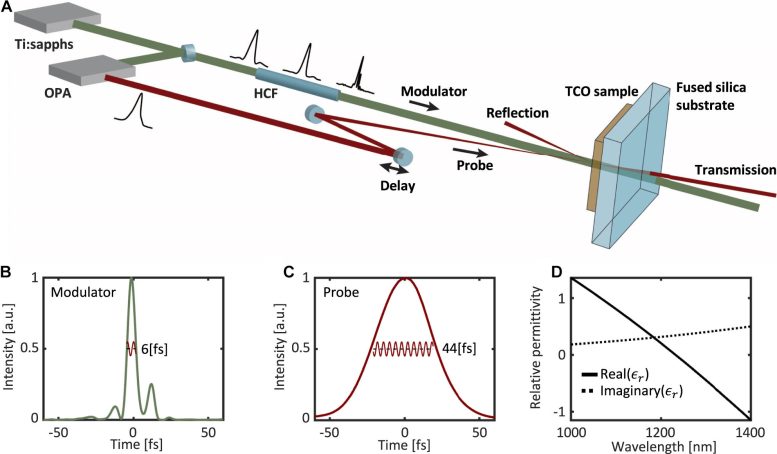
Experimental setup for measuring time-refraction in the single-cycle regime. Credit: Eran Lustig et al.
A PTC is only stable if the refractive index can be made to rise and fall in line with a single cycle of electromagnetic waves at the frequency concerned so, unsurprisingly, PTCs have thus far been observed at the lowest-frequency end of the electromagnetic spectrum: with radio waves.
In this new study, lead author Mordechai Segev of the Technion-Israel Institute of Technology, Haifa, Israel, with collaborators Vladimir Shalaev and AlexndraBoltasseva from Purdue University, Indiana, USA, and their teams, sent extremely short (5-6 femtosecond) pulses of laser light at a wavelength of 800 nanometers through transparent conductive oxide materials.
This caused a rapid shift in refractive index that was explored using a probe laser beam at a slightly longer (near infrared) wavelength. The probe beam was rapidly red-shifted (that is, its wavelength increased) and then blue-shifted (wavelength decreased) as the material’s refractive index relaxed back to its normal value.
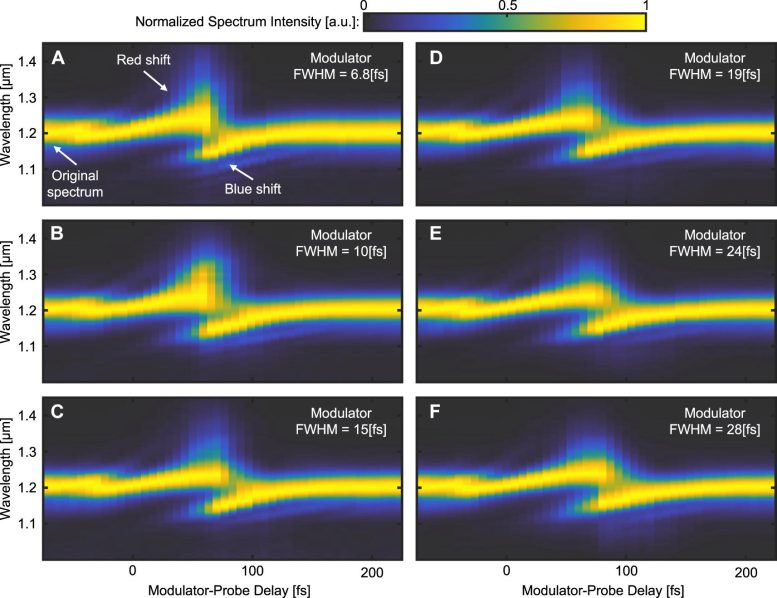
Transmission spectrograms of 44 fs probe pulses that have passed through the ITO sample, for modulator pulses of different temporal widths. Credit: Eran Lustig et al.
The time taken for each of these refractive index changes was minuscule – less than 10 femtoseconds – and, therefore, within the single cycle necessary to form a stable PTC.
“Electrons excited to high energy in crystals generally need over ten times as long to relax back to their ground states, and many researchers thought that the ultra-fast relaxation we observe here would be impossible,” Segev said. “We don’t yet understand exactly how it happens.”
Co-author Shalaev further suggests that the ability to sustain PTCs in the optical domain, as demonstrated here, will “open a new chapter in the science of light and enable truly disruptive applications”. However, we know as little of what these might be as physicists in the 1960s knew of the possible applications of lasers.
Reference: “Time-refraction optics with single cycle modulation” by Eran Lustig, Ohad Segal, Soham Saha, Eliyahu Bordo, Sarah N. Chowdhury, Yonatan Sharabi, Avner Fleischer, Alexandra Boltasseva, Oren Cohen, Vladimir M. Shalaev and Mordechai Segev, 31 May 2023, Nanophotonics.
DOI: 10.1515/nanoph-2023-0126
The research was funded by the German Research Foundation.

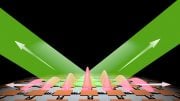



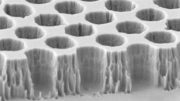
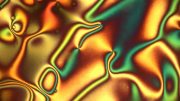
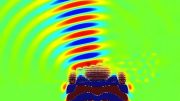
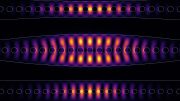
Do you understand how light forms and spreads? Do you think the scientific theory you believe is scientific?
If you are really interested in science, you can browse https://zhuanlan.zhihu.com/p/569722770.
It appears that these experiments are confined to materials with a negligible imaginary (in the complex number sense) component, the extinction coefficient. Because reflection is influenced by the extinction coefficient, where it becomes dominant in highly-reflective opaque materials like metals, a general theory will have to take into consideration the complex refractive index.
Why “Expand To Show Full Article”?
It’s annoying!